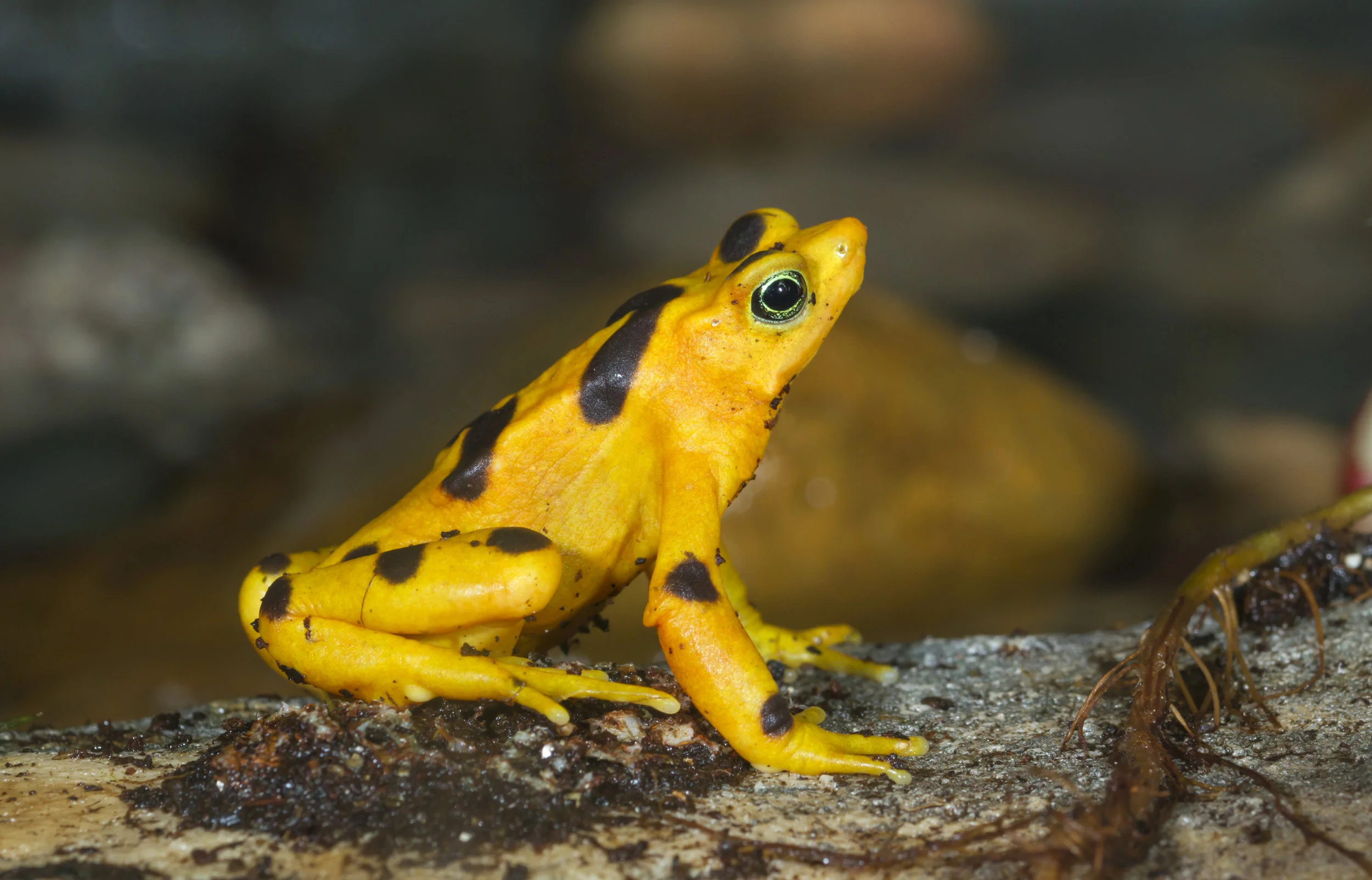Panamanian Golden Frog
"Panamanian Golden Frog" by Don Seegmiller (digital)
“I chose the Panamanian Golden Frog for a number of reasons:
1. He is Panama’s national animal.
2. Sometimes it is the smallest of the animals that get overlooked and are most threatened.
3. This is a beautiful creature and every individual has individual skin patterning.
4. This small creature may already be extinct in the wild.”
Your purchase is helping Expedition Art and Saving Species purchase land in Sumatra! Learn more about the project.
Habitat
The Panamanian Golden Frog inhabits streams along the slopes of the central rainforests and cloud forests of western-central Panama. They inhabit wet forest streams and dry forest streams.
Family Life
These frogs are diurnal, or active during the day. The male Panamanian golden frog are known to make a whistling sound and at least two different types of calls. These calls are loud enough to be heard from their home by the streams into the forest. This behavior seems odd because the frogs have no eardrums and the rivers near where they live can be very loud. Because males lack vocals, they attract females with visual displays that can include leg and head twitching, stamping the ground, and hopping in place. During mating, the female can deposit 30 to 75 eggs in long strings in shallow water as the male fertilizes them. Tadpoles are completely white for the first few days after hatching and will develop their color after a few days.
Lifespan
Most estimates put the Panamanian Golden Frog’s life span between ten and 15 years.
Hunting Habits/Diet
The Panamanian golden frog is an insectivore. Its diet consists mostly of insects and other small invertebrates. They use their eyes to find prey. In the wild, Panamanian golden frogs eat a wide variety of invertebrates such as beetles, flies, ants, springtails, caterpillars, wasps and spiders.
Population
This species is believe to be extinct in the wild, with a small unknown amount remaining in zoos.
Fun Fact
Panamanian golden frogs are the most toxic Atelopus species—the skin of a single individual contains enough toxin to kill 1,200 mice. They get their toxins from the insects they eat in the wild.
Why are they Endangered?
Habitat loss remains the most serious threat, but pollution, disease, climate change, and over-collection for the pet trade are also significant. Some of these threats can be mitigated through legal and physical protection of species, but many – such as the amphibian chytrid fungus — cannot.
Status
Critically Endangered


